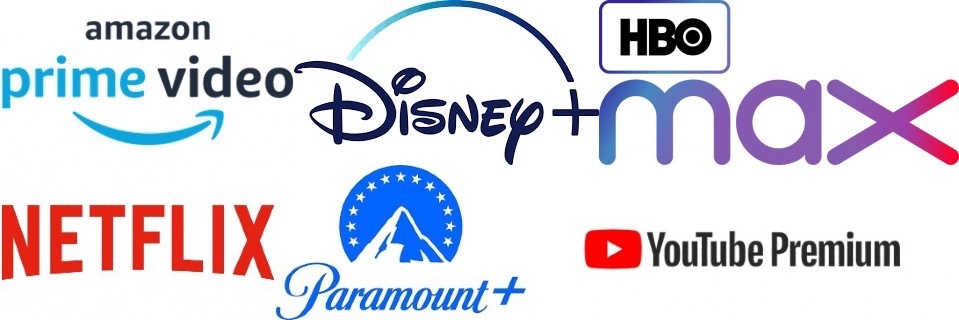By Dom Serafini
What is the business model of a made-for-streaming program? How much it costs is easy to figure out (and is explained at the bottom of this article), but how much the show will make or how much it is worth is difficult to gauge. Said one Canadian producer: “I wish I knew their formula. It’s not made available to producers precisely what their model is.”
A Hollywood producer concurred: “I don’t know. At point of sale we discuss what the budget range is. We want more, they want less. If there are multiple offers we can get some more.”
When a series is made for traditional television, the cost of each episode is mostly borne by the network that commissioned it, and the producer recoups the deficit on the international market, with the profit coming from syndication. In addition, based on its popularity and shelf life, the series acquires a library value that producers can collateralize for bank loans. For the broadcaster, the show has a pre-set value (determined by the pre-committed advertisers), and therefore the profit is easy to estimate.
To determine the value of a made-for-streaming program, streamers have complex and entangled formulas; some well set, others that are still in the process of being fine-tuned.
Here, we’re also touching on an acceptable form of “Transfer Pricing,” or the price that one division in a company charges another division. This is meant to be the fair market price for content that streamers need from participants because they are selling to themselves.
Nonetheless, for all streamers the main production cost considerations include the number of subscribers a new show will attract, how much a show will reduce existing subscriber churn, and how long it will take a show to prompt new subscriber sign-ups. For this last one, typically, if there aren’t many new subscriptions after the second season of a given show, it is assumed that those new subs won’t ever materialize, and the series is canceled.
The formula to determine the value of a show is triangulate (meaning it takes several elements into consideration). For instance, when someone signs up for content they think they’ll want to watch, this process involves such elements as analytics (analysis of data or statistics) and metrics (a method of measuring something).
Nevertheless, streamers have to sort of gauge the value of a new show in advance, even though testing has shown that the predicted ratings aren’t actually useful. In effect if a new show’s episode costs $4 million to produce, the streamers will know its effective value only after it is already on their platforms.
Using some past history as an example, in 2011 Netflix commissioned two seasons of the U.S. version of House of Cards, with 13 episodes per season. The total price tag was $100 million. According to reports, in 2013 the series brought in three million new subscribers (two million in the U.S., one million overseas), or $280 million a year. The series continued for four additional seasons.
And so, the value of a new show is determined by how many new subscribers it prompts, even though they have to figure out if a subscriber gets onboard because of that particular show or some other.
It’s possible that streamers assign a hypothetical new subscriber value to each new show. But, since the show doesn’t have a back end, after a certain time, its value becomes zero.
Netflix, for example, established that its new show success rate is 70 percent, and that if they can get each user to watch at least 15 hours of content each month, they are 75 percent less likely to cancel. If they drop below five hours, there is a 95 percent chance they will cancel.
As for production costs, Netflix and other streamers typically offer a “cost-plus” model, which covers the cost of production plus anything between 15 percent and 40 percent on top of production costs (depending on the producers’ leverage). When Netflix’s deals are ownership deals (i.e., buyouts), the producers sign away the majority of future revenue opportunities to Netflix for a larger cut upfront. For licensing deals, the rights are for about nine years.
Another formula calls for “advances against backend,” which replicates profits that producers would see in models prior to streaming. These “profit points” occur as separate payments. However, “advances against backend” typically start in the second season of a series. In Netflix’s case, though, it isn’t until the fourth season that most series start paying backend advances, which, reportedly, is why Netflix often cancels series before the fourth season.
This is different from how traditional TV networks license shows, which covers 60 percent of production. However, the producers retain the rights, giving them the opportunity to make money if a show is a hit.
Netflix’s contracts also generally require the producers to pay residuals. Plus, Netflix will typically earn the majority of money from any advertisements, which are restricted to product placement. The producers also give up most merchandising rights.
Netflix does guarantee additional bonuses for producers if a show makes it to a second season and beyond. For example, a producer on a hit Netflix show may earn an additional $2 million if a show gets to the second season, but the producer could have earned as much as $20 million if that same show were licensed to a traditional network.
Reportedly, it is expected that there will be a lot of lawsuits in the future by content creators who don’t believe that they were appropriately compensated for the use of their content on streaming platforms.
The model for library product is completely different. This will be analyzed in a future VideoAge Water Cooler feature.


Leave A Comment